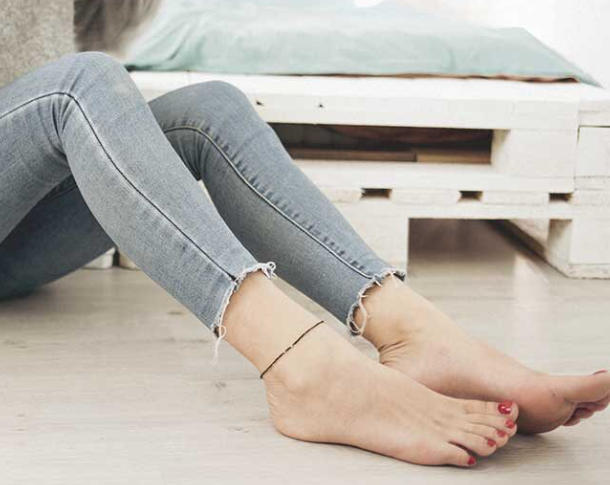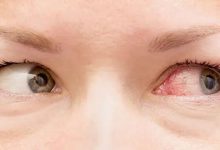How to stop restless legs immediately at home + video
How to stop restless legs immediately at home : Restless legs syndrome (RLS), also known as Willis-Ekbom disease, is a common neurological disorder that causes uncomfortable sensations in the legs, leading to an overwhelming urge to move them. These sensations often become more pronounced during periods of inactivity, especially in the evening or at night, and can significantly disrupt sleep. While the exact cause of RLS remains unknown, it is believed to involve a combination of genetic, neurological, and environmental factors. Fortunately, various at-home interventions can help alleviate the symptoms immediately. This essay delves into some of these effective strategies.
How to INSTANTLY Relieve Restless Legs at Night :
How to stop restless legs immediately at home
Iron and Magnesium Supplements: Some studies have shown a link between iron and magnesium deficiencies and RLS. Low levels of these minerals in the brain might contribute to restless legs. Before starting any supplementation, it’s essential to consult with a healthcare professional and get your iron and magnesium levels tested. If deficient, taking these supplements may help reduce symptoms.

Leg Exercises: Physical activity can significantly alleviate RLS symptoms. Simple leg exercises, such as leg stretches, calf raises, or walking, can help. Regular physical activity can increase blood flow and stimulate the muscles, potentially reducing the discomfort and urge to move the legs.
Warm and Cold Compresses: Alternating between warm and cold compresses can be effective. The heat can promote blood circulation, while the cold can numb the area and relieve discomfort. Applying a warm compress for about 15 minutes, followed by a cold one, can offer relief.
Leg Massage: Gently massaging the legs can increase blood circulation and help to soothe the muscles. Using essential oils such as lavender or chamomile, which have relaxing properties, can enhance the benefits of the massage.
Weighted Blankets: Some people with RLS find relief by using weighted blankets. The added pressure can provide a comforting sensation and may reduce the urge to move the legs.
Maintaining a Regular Sleep Schedule: RLS symptoms tend to worsen at night, making it crucial to establish a consistent sleep pattern. Going to bed and waking up at the same time every day, even on weekends, can help regulate the body’s internal clock and potentially reduce the severity of RLS symptoms.
Limiting Stimulants: Reducing or eliminating the intake of stimulants such as caffeine and nicotine can be beneficial. These substances can aggravate RLS symptoms in some individuals. It’s also worth monitoring your alcohol intake, as it can interfere with sleep patterns and exacerbate restless legs.
Good Sleep Hygiene: Ensure your sleeping environment is conducive to relaxation. This includes a comfortable mattress and pillows, dark curtains, and eliminating noise. It might also be helpful to keep electronic devices, like phones and computers, out of the bedroom, as the blue light they emit can disrupt sleep.
Relaxation Techniques: Practices like deep breathing exercises, progressive muscle relaxation, and meditation can be helpful. They can reduce stress, which is a known trigger for RLS in some people.
Over-the-counter Pain Relievers: Some individuals find relief from mild RLS symptoms using over-the-counter pain relievers. However, it’s essential to consult with a healthcare professional before starting any medication.
Foot Baths: Soaking your feet in a warm bath can be both relaxing and beneficial for RLS symptoms. For added relief, Epsom salts, which contain magnesium, can be added to the bath.
Avoiding Medications that Trigger RLS: Some medications can exacerbate RLS symptoms. These include certain antihistamines, antidepressants, and anti-nausea drugs. If you suspect a medication is worsening your RLS, it’s crucial to discuss this with your healthcare provider. Never stop taking a prescribed medication without consulting a doctor.
Compression Socks: These can enhance blood circulation, potentially providing relief from RLS symptoms. They should be worn as directed and under the guidance of a healthcare professional.
Elevating the Legs: Raising your legs using pillows or an adjustable bed can sometimes reduce the discomfort associated with RLS.
Incorporating one or more of these interventions can provide immediate relief for many individuals with restless legs. However, it’s crucial to remember that what works for one person might not necessarily work for another. It may require a bit of experimentation to find out which strategies are most effective for you.
While these at-home remedies can offer immediate relief, they are not a substitute for professional medical advice. If RLS symptoms persist or interfere with your quality of life, it’s essential to seek the counsel of a healthcare provider. They can provide a comprehensive diagnosis, recommend further treatments, and help manage the condition in the long term.


